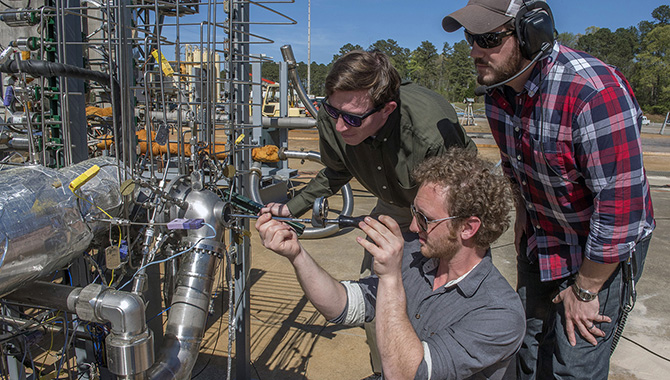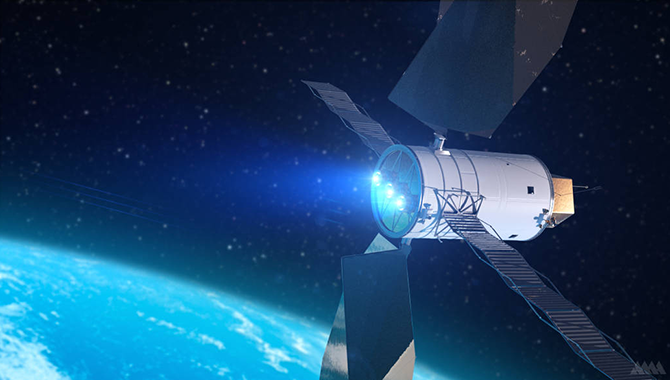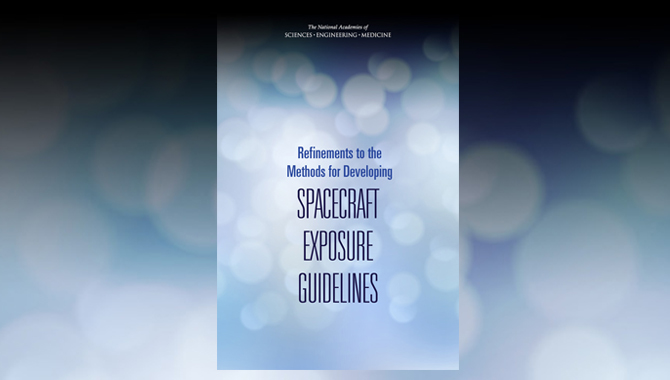
One of the engineering challenges facing NASA in the 21st century is the need to design and build effective but affordable technologies that will support missions to Mars. Here, engineers get ready to test a 3-D printed rocket engine turbopump using liquid methane at Marshall Space Flight Center. An engine with this technology could power a Mars lander.
Photo Credit: NASA/MSFC/Emmett Given
The Grand Challenges for Engineering ask current and future engineers to consider what they can do to shape humanity’s future.
Engineering has always been about transcending barriers to advance human potential and improve lives. The 21st century presents a number of engineering challenges, ranging from the need for novel solutions to protect food sources, the urgency of addressing the changing climate and its impact on quality of life, and the opportunity to continue developing technology that sends humans beyond Earth while serving the planet as well.
In 2008, an international committee of scientists, engineers, and other experts—with input from individuals around the globe—established 14 Grand Challenges for Engineering in this century. According to a new publication from the National Academy of Engineering (NAE), these concepts address “the most important, tractable engineering system challenges that must be met in this century for human life as we know it to continue on this planet.”
The Grand Challenges cover a spectrum of topics, from such aspirational goals as reverse-engineering the brain to ensuring basic needs are met, like having access to clean water. They focus on optimizing learning, harnessing less-traditional energy sources, advancing virtual training tools, enhancing medicine and medical care, restoring infrastructure, securing cyberspace, managing nitrogen spread and carbon dioxide emissions, tracking nuclear materials, and designing tools, instruments, and systems to enable scientific discovery.
In 2015, the NAE held a forum in which seven of the original eighteen leading technological thinkers who formulated the Grand Challenges met to consider the progress to date and the tasks still ahead. The group, whose expertise spanned engineering disciplines and included a lunar science planning supervisor for the Apollo Program as well as a past associate administrator for aeronautics at NASA, discussed the need to transform the field of engineering by engaging new potential engineers, broadening the education of engineering students, and encouraging existing and future engineers to tackle problems that affect the globe.
They highlighted the urgency of reaching out to more young people about the critical role that engineering plays in designing, building, and realizing the world’s future. The more that people understand the ways in which engineering goals overlap with humanitarian goals, the more excited they will be to become engineers themselves and contribute to solutions that will carry humanity through the coming century.
They noted that technology can be a unifying force around the world, breaking down boundaries both in the act of solving a problem and as a result of implementing the solution. They also emphasized the importance of sharing knowledge between engineers and of telling stories about what they’re doing—and how they’re doing it—to everyone else. When engineers are unable to talk about their work, citing “proprietary details,” the world won’t learn about their ideas and so cannot build upon them.
Alan Stern—engineer, scientist, and Principal Investigator for the New Horizons mission to Pluto—commented recently on the value of sharing engineering and scientific data with the world. During a talk at the National Academies’ Space Science Week in March, he said that in the “short period of time from the 1960s to the early 21st century, we opened the solar system to exploration. We did it for all mankind, gave all the data away. […] And hopefully it’s inspiring people to do great things in the next couple of generations.”
With their strong commitment to encouraging discovery and discourse, organizations such as the NAE and NASA, along with their international counterparts, are leading the way in breaking down barriers between engineers, their innovations and actions, and the people who can benefit from them. The Grand Challenges for Engineering are an important part of this effort because the challenges speak to everyone. They are not a concern for one country or a particular engineering discipline. Rather, the Grand Challenges highlight the ways in which engineering can serve humankind by innovating solutions to global concerns.
Read Grand Challenges for Engineering: Imperatives, Prospects, and Priorities: Summary of a Forum.









